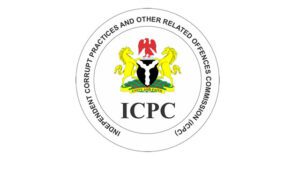
Naira remains weak in P2P, black market amid speculation on U.S. rate cuts
The Nigerian Naira continued to hover near its low against the US dollar in the peer-to-peer (P2P) and physical black markets, as the possibility of the US Federal Reserve slashing interest rates in 2024 gained traction following the release of disappointing US inflation data.
With Nigeria’s official foreign exchange market closed for public holidays, the Naira was traded at approximately N1,202 to the dollar in the P2P market on Tuesday.
The festive season has led to reduced trading activity, as year-end holidays have taken effect in several key markets.
The US financial market’s calendar for economic releases is sparse this week, suggesting that there will be limited new information to guide currency markets.
Persistent dollar scarcities in Nigeria’s official market have caused the Naira’s official exchange rate to inch closer to the rates seen in the parallel market.
In the physical black market, the Naira was exchanged at an even weaker rate of N1,233 to the dollar, highlighting the continued pressure on the local currency.
As traders and investors navigate through the thin trading volumes and await the reopening of the official FX market, the Naira’s performance remains a focal point amidst the broader economic challenges facing the country.
The Nigerian currency has been volatile since the Nigerian government eased currency controls in June, which had kept the currency artificially high.
The FG has pledged to boost supply, but the FX liquidity crunch in Africa’s largest economy persists.
The dollar index, hitting its lowest point in the last 5 months, further intensified its decline as the European Central Bank and the Bank of England provided more hesitant signals regarding interest rate cuts.
Weak global growth might be the catalyst for the dollar to find support at current levels in the first quarter of 2024, even though the current view indicates that sellers against major currencies may continue to pressure the greenback until the end of the year.
However, in the current situation, while markets highlight that the expectation for a rate cut in March has reached 80 percent, this expectation continues to keep the dollar under pressure.
The technical outlook shows the naira still has some time as the U.S. index support does not look solid. The downward trend of the short-term EMA values and the negative outlook of the Stochastic RSI despite Friday’s buy signal that the DXY may fall as low as 101 index points.
On the other hand, the 103 index point’s band has become critical due to the falling channel movement in a possible recovery move last week.
Following such a recovery, the U.S. dollar index might make another move in the direction of 101 support, though the naira’s ammunition remains weak amid weak FX inflows.
The market is now more confident that the Fed will cut interest rates in March of next year after data released on Friday revealed that U.S. prices decreased in November from the previous month for the first time in more than three and a half years and that the annual increase in inflation dropped below 3 percent.
The reading came one week after Fed policymakers, during the central bank’s last policy meeting of the year, hinted at the possibility of rate reduction in 2024, a move that depreciated the value of the dollar.
Markets indicate that the Fed has made considerable progress on inflation, as the core started the year closer to an annual rate of 5%, though the job is not yet done in ensuring inflation is on a sustained trajectory toward its 2 percent target.



